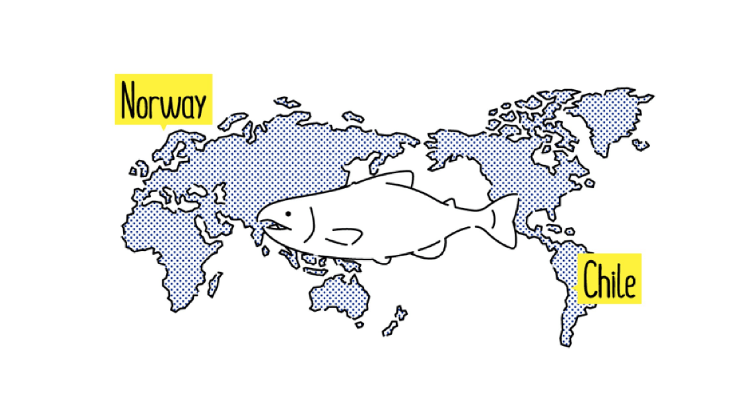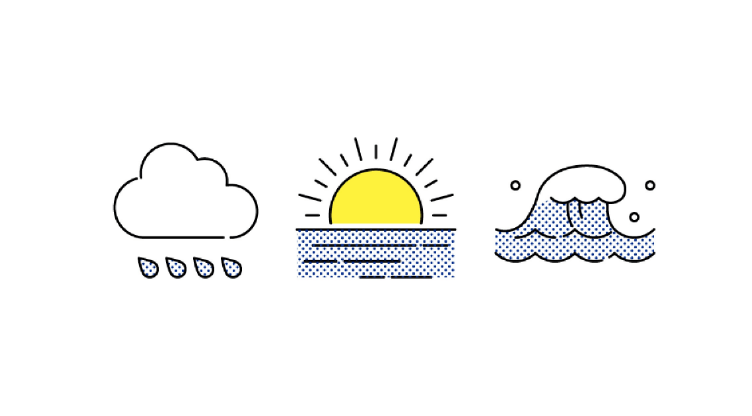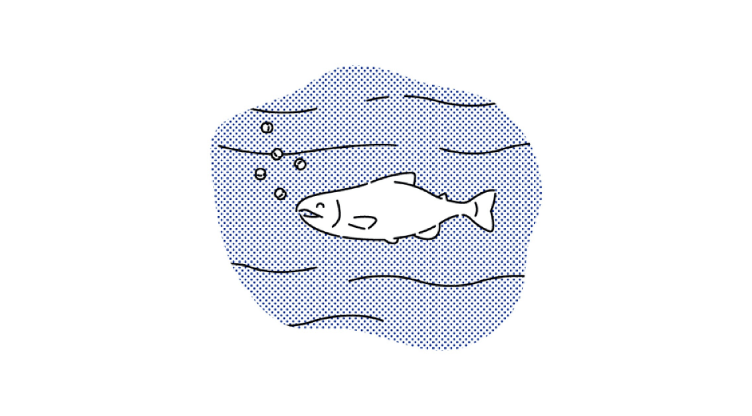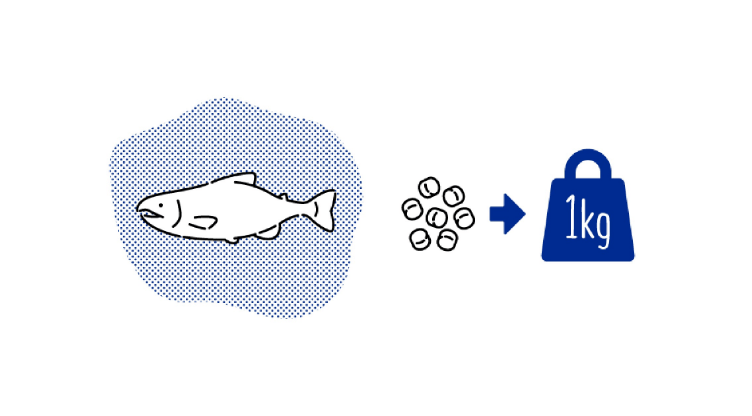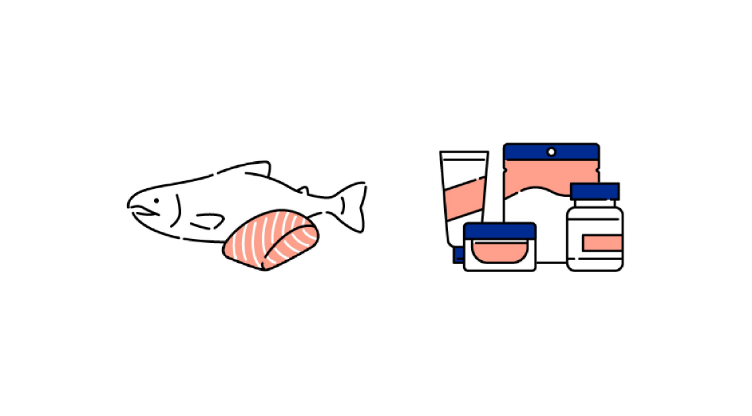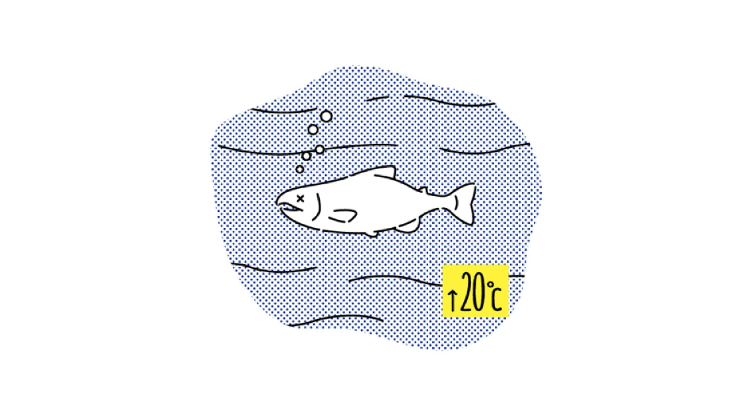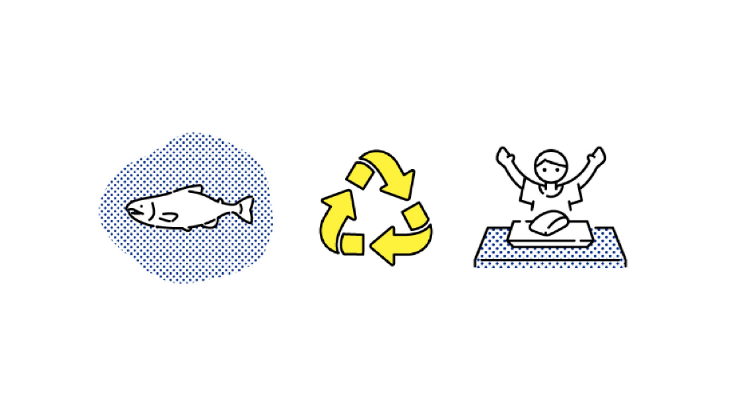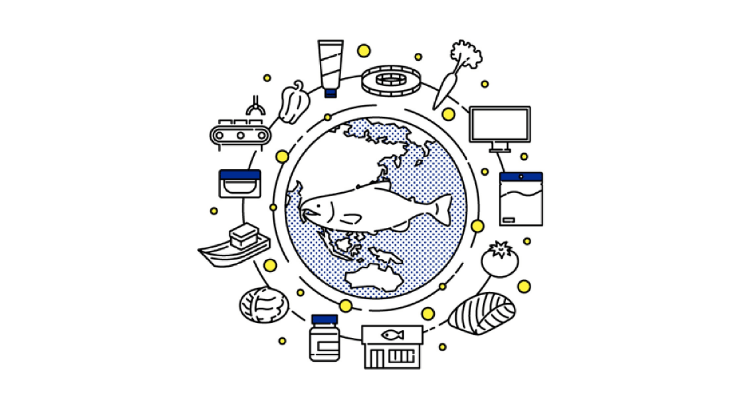- Home
- Special Contents
- Tidbits on Salmon Farming
- Salmon Farming and Feeding
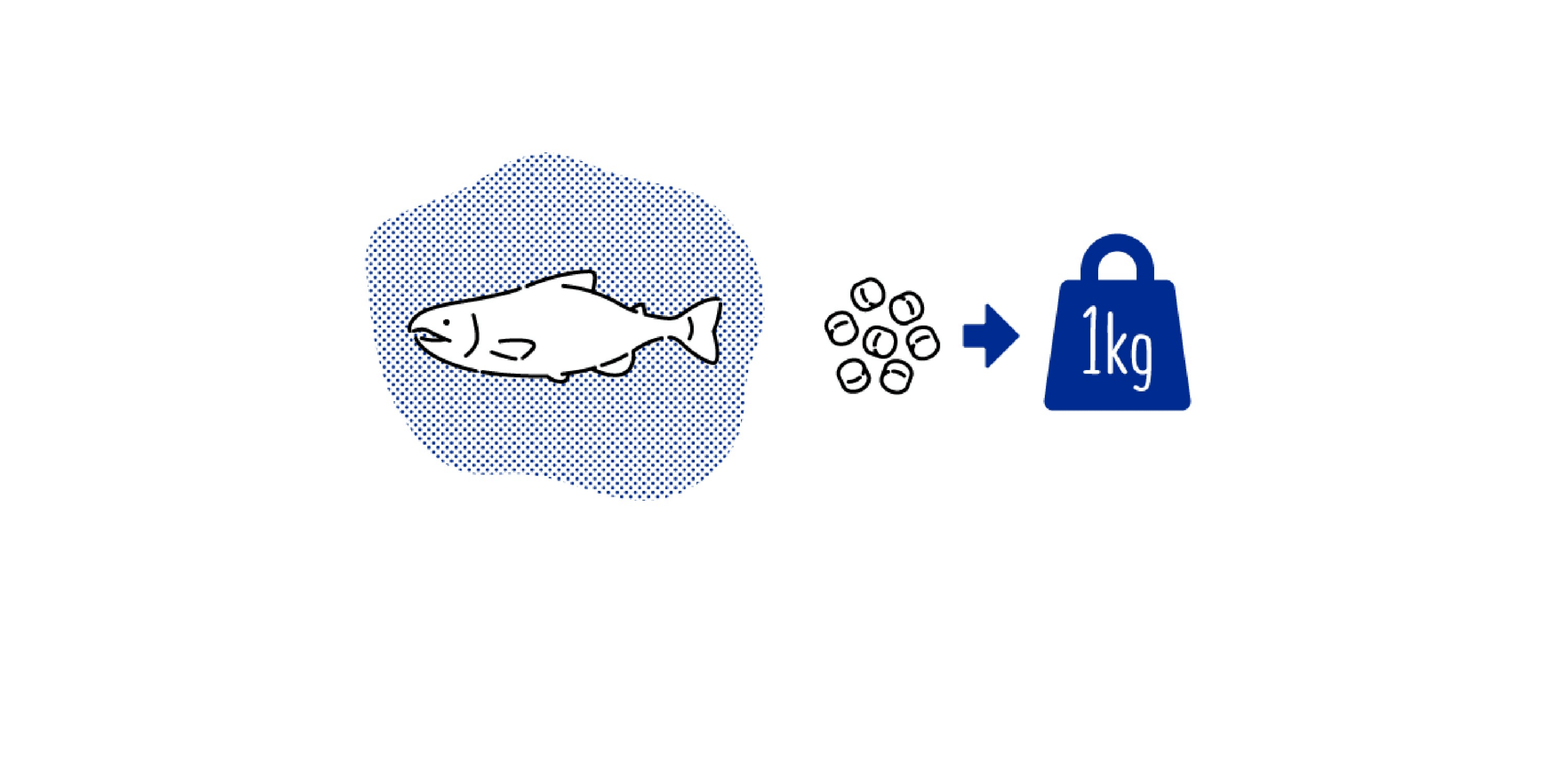
Tidbits on Salmon Farming
Salmon Farming and Feeding
In the marine feed industry, there are three companies known as the BIG3 (Scretting, BIOMAR, and EWOS), and feed research is being conducted mainly by these three companies. For example, we are continuously developing feeds from various perspectives, such as feeds with higher aquaculture efficiency, feeds with less environmental impact, and feeds that can withstand the rising prices of raw materials by reducing the use of fishmeal and fish oil raw materials, which are under tight supply.
What are the ingredients of the feed?
Salmon feed is composed primarily of protein and fat. Incidentally, salmon do not feed on carbohydrates. Animal proteins are mainly made from fish meal and chicken meal, and for vegetable proteins, they are made from soybeans and corn.
The percentage of fishmeal in the total feed is one of the most important factors. This is 25% to 50% in Japan, and 15% to 20% in Norway and other countries with advanced aquaculture.
What is the most efficient feed for meat gain efficiency?
It is obvious that a well-balanced feed is necessary to match the growth stage of the animals, but from the standpoint of meat gain efficiency, a high-calorie feed is the key. Calories are affected by the amount of fat, but the main raw material of lipids is fish oil. In Denmark, a more fatty, high-calorie feed is used. To produce fatty feed, it is necessary to have the equipment and know-how to produce fish oil-rich feed, and advanced aquaculture countries are ahead of Japan in this respect. One of the reasons why Musholm, a Danish subsidiary, has a 20% better FCR than Japan Salmon Farm is due in part to this difference in feed.
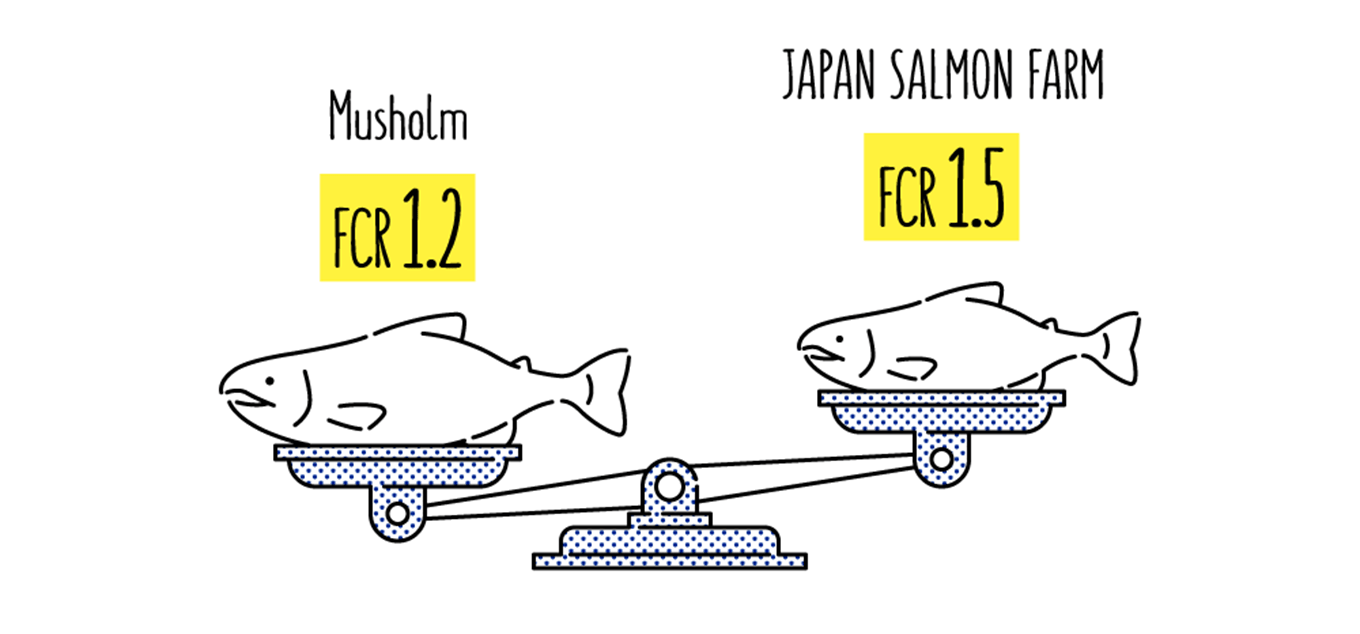
What is the best food for automatic feeding?
In the past, feed was spread by hand, but in recent years there have been an increasing number of automatic feeders that use air to dispense the feed.
For automatic feeders, which flies with air, elastic feeds are suitable, which do not shatter, but scatter in a lumpy state.
In the production of feed, raw materials are blended, kneaded, heated, and pressurized, and it is during these processes that the elasticity of the feed is determined.
In the case of Japan Salmon Farm, the powder ratio is currently around 1%. Improvement of the flour ratio directly leads to improvement of FCR, and we will continue to make improvements to avoid waste.
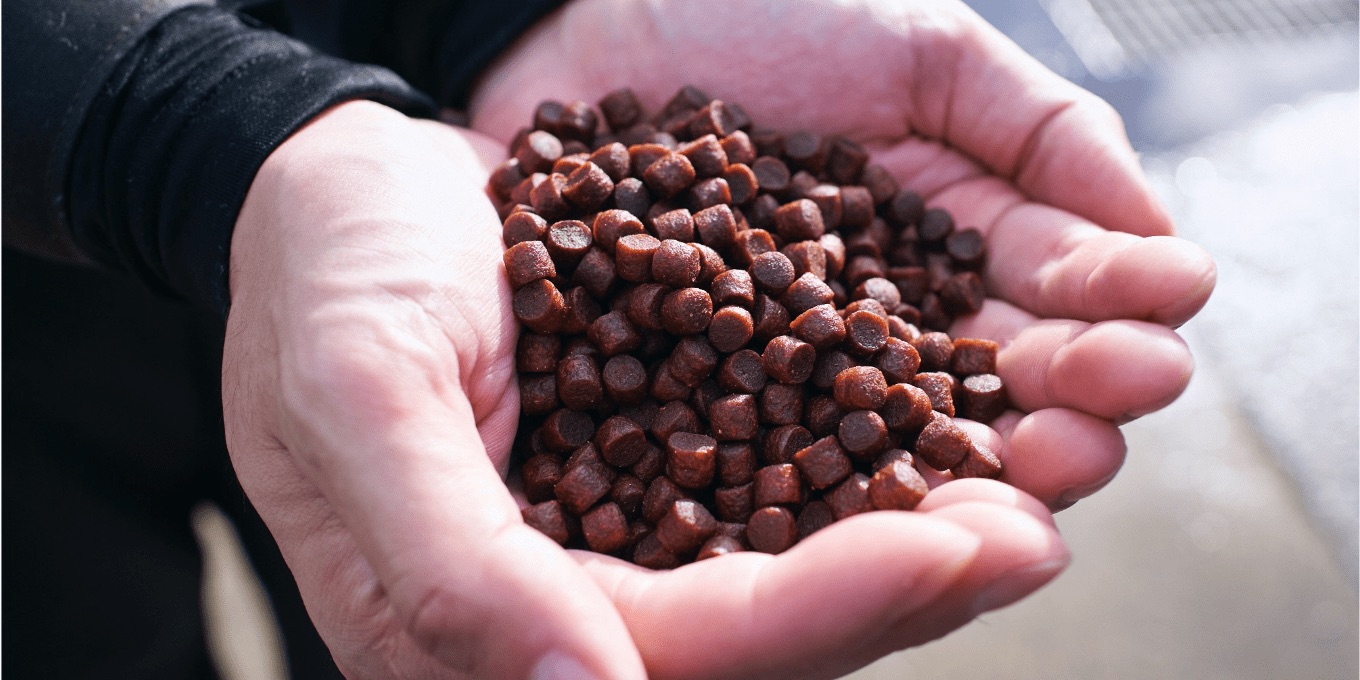
What is the best feed for a recirculating aquaculture farm?
The method of aquaculture in which water is circulated through a filtration system and reused is called recirculating aquaculture. Circulating aquaculture uses biological filtration to purify the water. Biological filtration is a filtration method that relies on the power of useful bacteria to clean the water. The bacteria convert the nitrogen in the ammonia produced by the organism's metabolism into relatively harmless nitrites and nitrates. Therefore, it is convenient to feed with a small amount of nitrogen metabolized by farmed fish, that is, a small filtration load. In addition, the accumulation of feed-derived phosphorus also affects fish. Nitrogen and phosphorus are found in high amounts in protein (especially fishmeal), so from this perspective, a diet with less protein and more fat is appropriate.
Also, feed containing thickeners is suitable because when excretions are excreted in clumps, they are easily supplemented by the filter and the nitrogen and phosphorus in the excretions can be quickly recovered, making the water less turbid.
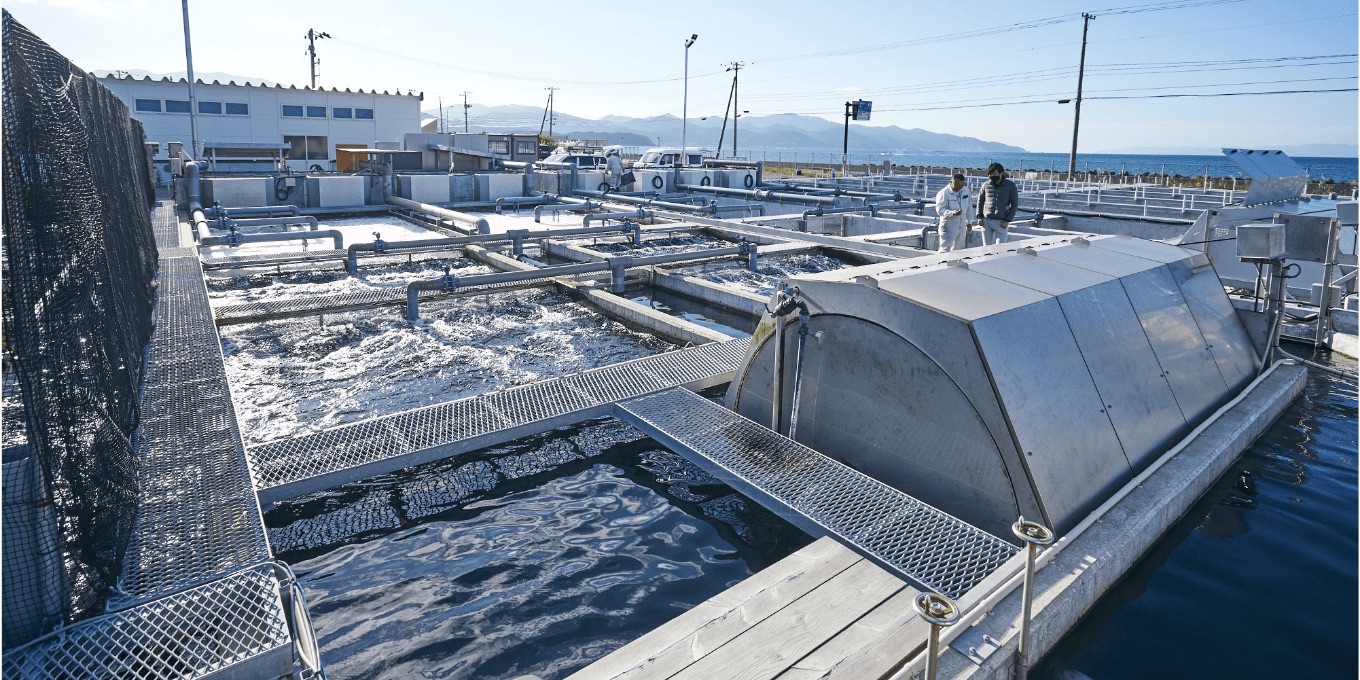
What is the feed that reduces the mortality rate?
Improvement of the mortality rate is essential to increase aquaculture efficiency, so feed that leads to lower mortality rates is very effective.
It is during acclimation that the number of mortality rates increase significantly. During acclimation, the environment is rapidly changed from freshwater to saltwater, which is stressful for the fish. More fish die because they cannot tolerate this stress. Therefore, a food that increases stress tolerance during acclimation = a food that reduces the mortality rate. In this regard, a feed that provides a balanced intake of vitamins is suitable.
*Acclimation is the process of gradually increasing the salinity of freshwater to sea water to acclimate the fish to the salinity of sea water during the transition from freshwater to sea water aquaculture.
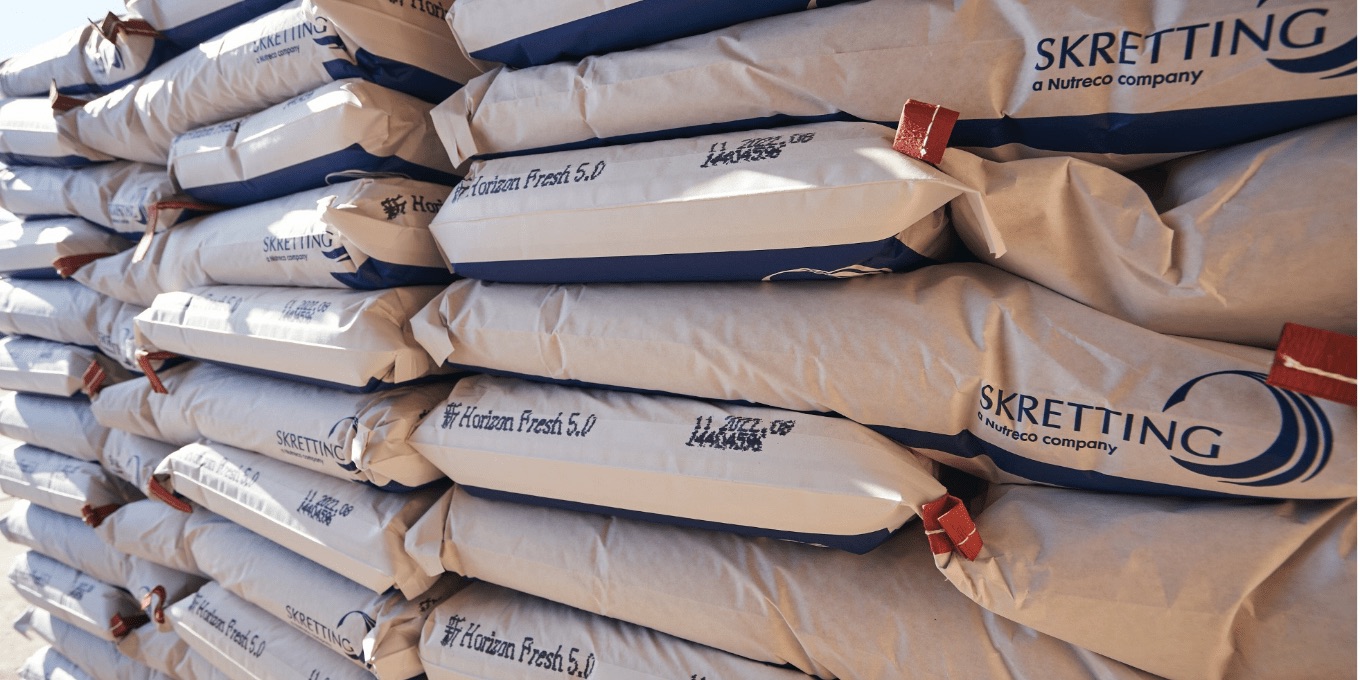
What is a feed with a low fishmeal ratio?
From the perspective of the SDGs (let's protect the abundance of the oceans), I would think that a feed with a low fishmeal ratio would be better so as to reduce the spending of natural marine resources. But actually, this is not always the case.
If the fishmeal ratio is simply lowered to the point where the fish are lacking in nutrients for growth, the farmed fish will not grow. From an SDG perspective, it is important to harvest more farmed fish compared to natural fish consumed as feed. Simply reducing the fishmeal ratio alone would be counterproductive because it would reduce the harvest. This means that it is important to strike a balance between reducing the fishmeal ratio and the growth of farmed fish.
Incidentally, developed aquaculture countries use feed with a lower fishmeal ratio than Japan. The fishmeal ratio in Japanese feed is 25% to 50%, while in Norway it is 15% to 20%. Even so, the fish are provided with sufficient nutrients for growth and efficient aquaculture is achieved. This is another glimpse of why Norway and other countries is an advanced aquaculture country.
Other Tidbits
